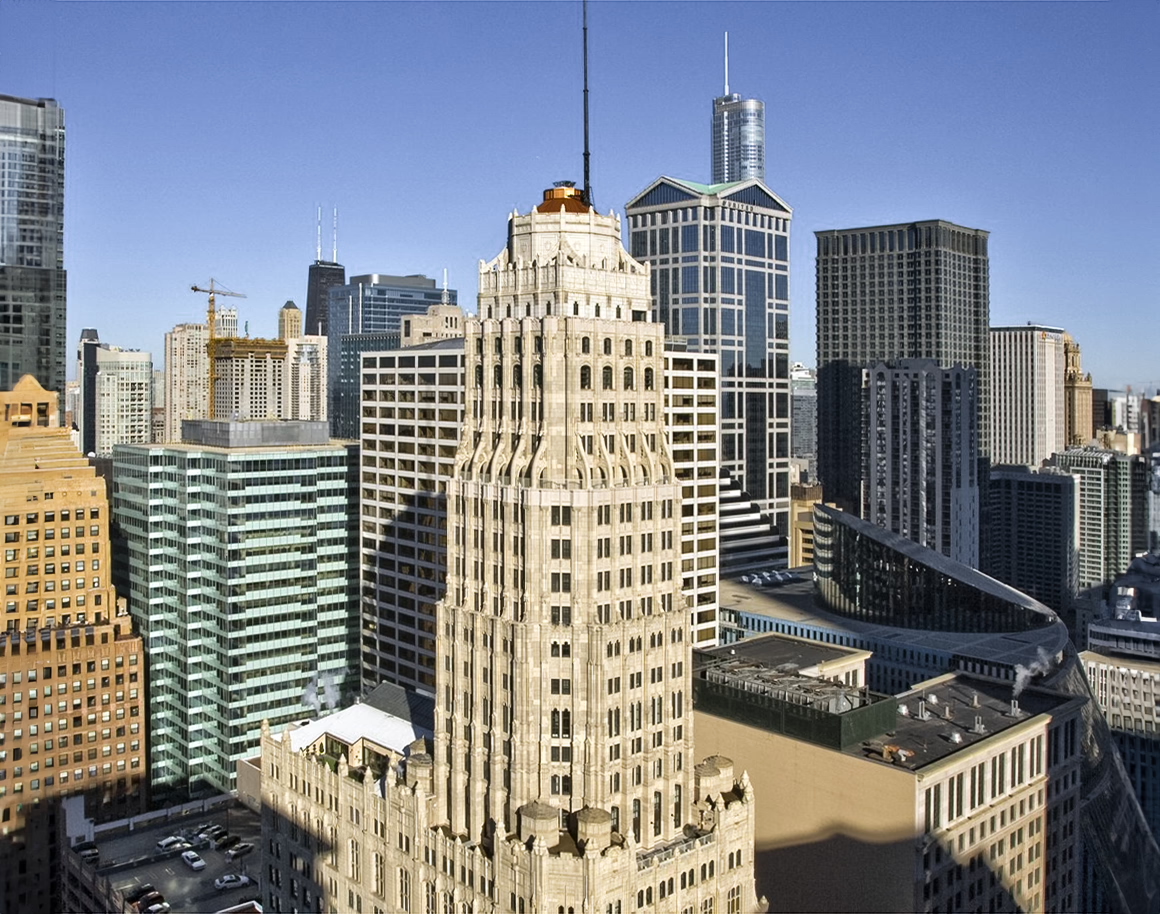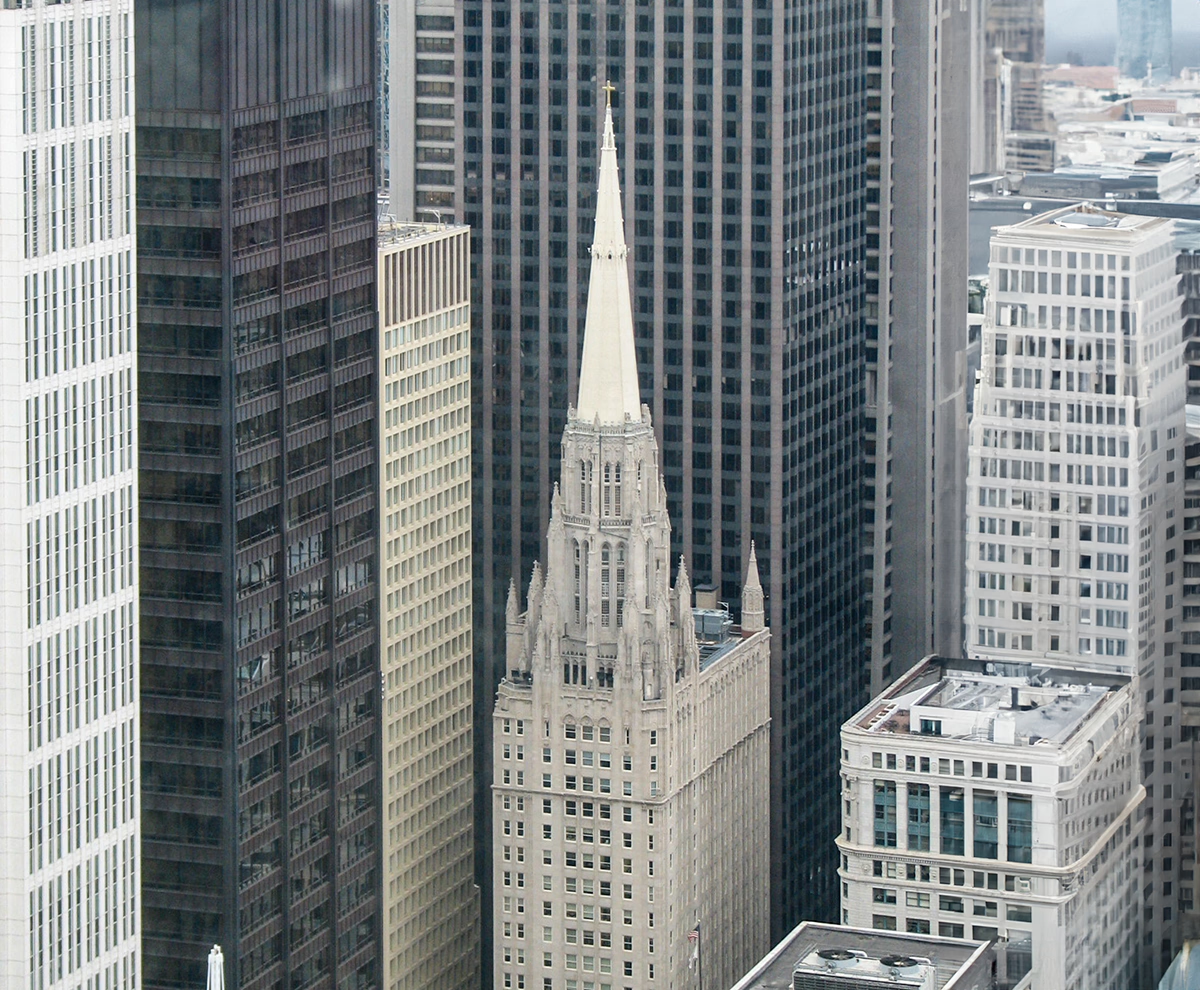Randolph Tower vs Chicago Temple Building


Comparing the Randolph Tower and the Chicago Temple Building is interesting because they both stand in Chicago, IL, and were completed within 5 years of each other, but they were designed by different architects.
This offers a unique glimpse at how rival designers approached projects in the same city during the same era.
Height & Size
These two towers present an interesting contrast in their proportions. The Chicago Temple Building rises higher at 568ft (173m), while the Randolph Tower reaches 463ft (141m). However, the Randolph Tower accommodates more floors with 45 levels above ground, compared to 23 floors in the Chicago Temple Building.
This suggests different approaches to interior space design. The Chicago Temple Building has an average floor-to-floor height of approximately 7.5m, while the Randolph Tower has more compact floors averaging around 3.1m each. The taller building's more generous floor heights might indicate grander interior spaces, higher ceilings, or different programmatic requirements.
These different proportions likely reflect the specific needs each building was designed to serve, whether driven by zoning regulations, client requirements, or the intended use of the spaces within. The contrast shows how architects can achieve different spatial experiences even when working with similar overall building scales.
Architectural Style
Both the Randolph Tower and the Chicago Temple Building were designed in line with the aesthetic conventions of the Neogothic style.
Both buildings were completed when the Neogothic style was already past its peak. This makes them feel like late echoes of the movement, more reflective of continuity or nostalgia than of cutting-edge design at the time.
Uses
The Randolph Tower is primarily residential, while the Chicago Temple Building is primarily religious.
Originally, the Randolph Tower was designed for commercial, but over time it was converted to residential. The Chicago Temple Building by contrast has maintained its original role.
The Randolph Tower offers 312 residential units.
Structure & Facade
Both the Randolph Tower and the Chicago Temple Building rely on a Frame structural system.
A frame structure uses a grid of columns and beams to carry the building's loads. This frees the walls from structural duties, allowing for flexible floor plans and larger windows.
They also employ the same type of facade, a Masonry facade.
A masonry facade gives the building a heavier, more traditional appearance. It often conceals a frame structure behind it, creating the look of solid walls without carrying the main loads.
| Randolph Tower | Chicago Temple Building | |
|---|---|---|
| Karl M. Vitzthum | Architect | Holabird & Root |
| 1929 | Year Completed | 1924 |
| Neogothic | Architectural Style | Neogothic |
| Commercial | Original Use | Religious |
| Residential | Current Use | Religious |
| 45 | Floors Above Ground | 23 |
| 141 m | Height (m) | 173 m |
| Frame | Structure Type | Frame |
| Concrete | Horizontal Structure Material | Concrete |
| No | Facade Structural? | No |
| Terracotta | Main Facade Material | Limestone |
| Steuben Club Of Chicago | Developer | First United Methodist Church |
| IL | State | IL |
| Chicago | City | Chicago |
| 188 West Randolph Street | Address | 77 West Washington Street |